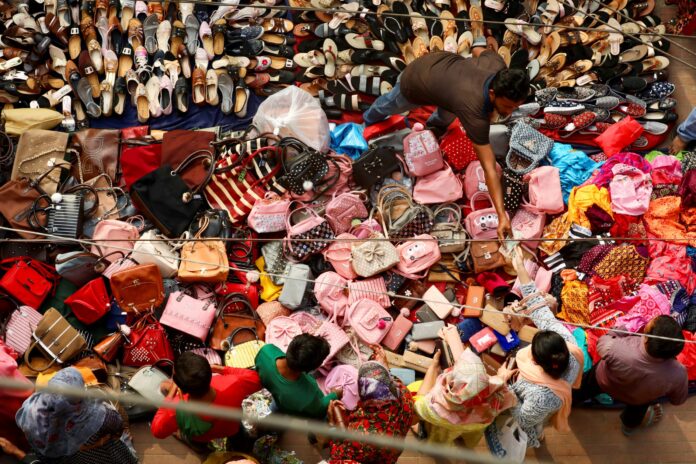The stellar economic rise of Bangladesh is hardly an enigma today. Growing consistently at an annual rate of over 6 percent, Bangladesh ranks 20th in the world in GDP growth – touted to reach the third position by 2026. According to the World Economic Forum (WEF), a renowned international lobbying organization, Bangladesh’s per capita income is expected to rise to $2860 by 2025, patently ahead of its mighty neighbour India, the fifth largest economy in the world. With a rapidly growing educated population, the country could fast become the economic frontrunner of the South Asian region. The recently inaugurated Padma Bridge is totemic of Bangladesh’s economic progress and resilience. However, the project holds some underlying layers that belie the apparent concept of self-sufficiency projected by the country. The key to understanding this dilemmatic case is to avoid a monolithic focus on raw data; instead, look at the broader picture in a larger context.
Officially known as the Padma Multipurpose Bridge Project (PMBP), the construct crosses over the Padma river, a downstream arc of the Ganges in Bangladesh. The project was conceived in the late 1990s in collaboration with the Japan International Cooperation Agency (JICA). Hailed as the largest infrastructure project Bangladesh has ever undertaken, the Padma Bridge is a two-level multipurpose railroad viaduct sprawled over 6.15 kilometers (3.82 miles).
It connects more than 21 districts in the southwestern periphery to far northern and eastern regions of Bangladesh. Additionally, the bridge has been extolled as a gateway in South Asia, facilitating trade with India, Bhutan, and Nepal while significantly reducing transit time and freight costs. The economic incentives for Bangladesh are aplenty. According to a Dhaka Tribune report, the Padma Bridge would immensely facilitate bustling inland trade and commerce, contributing about 1.3-2 percent to Bangladesh’s GDP by 2025.
I can offer myriad other metrics and testimonials to enthuse the construction of this megaproject. But my pivot is towards asking a simple question: Is it really emblematic of the economic success claimed by the highbrows of Bangladesh?
“This bridge is a symbol of our capacity, our strength, our dignity,” proclaimed Bangladesh’s Prime Minister Sheikh Hasina, addressing the inaugural ceremony of the project held in June. It was a veiled reference to her decision to self-fund the multibillion-dollar construction after the World Bank backtracked from funding the project, alleging corruption by government officials. Ironically, this bridge should have been symbolic of graft and embarrassment if not for the rigorous efforts by the ruling Awami League to whitewash the scandal and meticulously redress its global image.
In 2012, the World Bank withdrew support worth $1.2 billion, citing that a Canadian construction company SNC-Lavalin conspired to nefariously gain a $50 million contract to supervise the construction of the Padma Bridge by bribing high-level Bangladeshi government officials. While Hasina and her acolytes vociferously denied allegations, painting an elaborate narrative of an international conspiracy to besmirch Bangladesh’s economy, the weight of evidence presented by the World Bank largely effaced any explanation otherwise. In 2013, the SNC-Lavalin admitted the bribery allegations despite persistent denial by Bangladeshi officials. And resultantly, the World Bank debarred the company for a decade and suspended the promised loan to Bangladesh.
The initial plan was to finance the PMBP project through external funding from multilateral lenders like the World Bank and the Asian Development Bank (ADB). However, the defamatory withdrawal of the World Bank fomented the exit of other lenders as well. Consequently, the Bangladeshi government transitioned to a skewed dependence on Chinese loans. Partnering with China Major Bridge Engineering Company, the arrangement required the Chinese government to finance 85 percent of the construction cost of $3.87 billion.
The productive growth of Bangladesh is nearly outmatched by its growing population. Eventually, the literate citizenry of Bangladesh would be disillusioned once the patina of prosperity wanes. And then the fate of Bangladesh would be no different than the reality of Sri Lanka today.
At this point, I stop and ponder over the stark contradiction of the Bangladeshi narrative. How can this project be classified as a symbol of the economic resolve of Bangladesh when almost the entire enterprise is on the bedrock of leverage? This subliminal messaging campaign to shape a story of Bangladeshi economic heyday and infrastructural prowess perfectly exemplifies the rhetorical devices exploited by the Awami League to put a veneer over rampant corruption in its administrative echelons.
The World Bank revealed that due to “limited competition of tender for the award of work,” a scope of corruption is created, which makes construction costs in Bangladesh higher than in any other country around the globe. However, such corruption is not just endemic to the construction industry. According to the Transparency International (TI) Corruption Perception Index (CPI), Bangladesh ranks 147 out of 180 countries with a score of 26 – unchanged since 2020. The Berlin-based corruption watchdog has consistently listed Bangladesh as a nation with “a concerning trend of weakening of anti-corruption institutions.”
According to its recent assessment, Bangladesh is ranked in the bottom fifth of all the countries surveyed globally, ranking as the “second most corruption-riddled country in South Asia,” ahead of Afghanistan by a narrow margin. It is a dismal reality that an economically promising nation like Bangladesh frequently panders to corrupt practices, surpassing even the notoriously corrupt countries in its neighbourhood. Unfortunately, this trend is not novel nor without a sufficing explanation.
From 2001 to 2005, Bangladesh ranked as the most corrupt country in the world in five consecutive TI reports. Transparency International has intermittently cited abuse of power; lack of justice; and autocratic surveillance and suppression of public expression as the fundamental reasons exacerbating corruption in Bangladesh. Hence, the Awami League clearly has a deficit of credibility, not just domestically but internationally. This is further worsened by massive irregularities in general elections in 2014 and 2018, the redressal of its public image is crucial for the ruling regime to avoid a domestic backlash. Thus, the Padma Bridge project is nothing but a ruse buttressed by the electoral gimmick “less Democracy, more Development” coined by the Awami League to compensate for the lack of legitimacy before heading for general elections next year, wearing the self-evinced “symbol of dignity.”
The global economic gloom is weighing heavily on Asia; and signs of distress are gradually emerging in Bangladesh. Inflation is skyrocketing while energy prices, compounded by the geopolitical crisis in Europe, are up by 50 percent. Imports have ballooned while exports and remittances have plummeted in line with the global economic slowdown, broadening the current account deficit to a record $17 billion.
It is no surprise then that the government of Bangladesh has applied for a bailout from the International Monetary Fund (IMF) to prevent a shortage of foreign exchange. Admittedly, Bangladesh has an external debt of only 20 percent and enough usable forex reserves to weather the global recessionary headwinds. However, if corruption persists at current levels, lofty construction projects would not buffer the economic collapse of Bangladesh.
The productive growth of Bangladesh is nearly outmatched by its growing population. Eventually, the literate citizenry of Bangladesh would be disillusioned once the patina of prosperity wanes. And then the fate of Bangladesh would be no different than the reality of Sri Lanka today.























